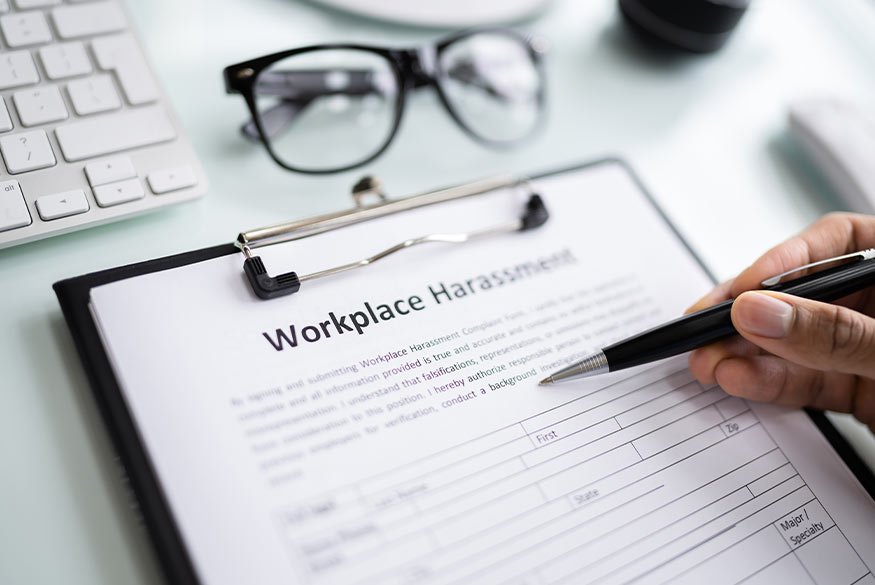Understanding and addressing the invisible forces shaping our workplaces.
Harassment and discrimination are persistent problems in workplaces and societies around the globe. Despite years of policy changes, training programs, and public awareness campaigns, these issues often surface, with devastating consequences for individuals and organizations alike. While explicit prejudice and intentional bigotry are indeed culprits, a more insidious force operates beneath the surface: unconscious.
Unconscious bias, sometimes called implicit bias, refers to the automatic, mental shortcuts our brains take when processing information about others. These biases arise from cultural norms, personal experiences, and societal influences, shaping our unconscious bias, which quietly sets the stage for harassment and discrimination, undermining efforts to foster truly inclusive environments.
What is Unconscious Bias?
Attitude or stereotypes involuntarily affect our understanding, actions, and decisions. Everyone has them. They result from our brains’ need to categorize and quickly process the vast amount of information we encounter daily. These biases can be related to race, gender, age, appearance, disability, sexuality, religion, and countless other factors, often rooted in deep-seated, learned associations.
For example, studies have shown that resumes with names perceived as “ethnic” are less likely to receive callbacks than those with “white” names, even when qualifications are identical. Similarly, women are more frequently interrupted in meetings, their contributions downplayed or dismissed. They are not always the result of overt discrimination or malice, but rather the subtle, unconscious preferences that shape our behavior.
To understand the root causes of harassment and discrimination, ti is essential to recognize the role of unconscious bias.
The link between the two is complex and multifaceted:
Normalization of Stereotypes: Unconscious bias often normalizes stereotypes, leading people to accept harmful generalizations as “just the way things are”. This normalizing effect creates environments where microaggressions- everyday slights and insults rooted in prejudice-are overlooked or dismissed, paving the way for more severe forms of harassment.
Selective Perception and Memory: Our biases shape what we notice, remember, and prioritize. For example, a manager might unconsciously perceive assertiveness in a male employee as leadership but view the same trait in a female employee as aggressiveness. Over time, these skewed perceptions can inform performance reviews, promotions, and disciplinary actions, reinforcing discriminatory patterns.
Groupthink and Exclusion: Unconscious bias can foster “ingroup and outgroup” mentalities, where those who are similar to the majority are favored, and others are informal social cliques or institutional barriers, which can escalate into more overt acts of discrimination or harassment.
Justification for Inappropriate Behavior: When unconscious biases go unexamined, individuals may rationalize or excuse inappropriate behavior, failing to recognize its impact. Jokes, comments, or actions perpetuating stereotypes are harmless but contribute to a hostile and unwelcoming environment.
The consequences of unchecked unconscious bias are far-reaching. At the individual level, targets of discrimination and harassment often suffer from stress, anxiety, diminished self-esteem, and even physical health problems. Career progression can be stymied, and talented individuals may leave the organizations where they feel underappreciated or unsafe.
The costs are equally significant at the organizational level. High turnover, reduced productivity, diminished employee engagement, and reputational damage are common byproducts of environments tainted by bias. Moreover, legal consequences and costly settlements can arise when harassment and discrimination are unaddressed.
Beyond the workplace, the ripple effects of unconscious bias perpetuate systemic inequities in education, healthcare, housing, and justice. Addressing these issues requires compliance with laws and a fundamental shift in recognizing and confronting our biases.
While ending unconscious bias might not be possible, there are actionable steps individuals and organizations can take to mitigate its impact.
1. Self-Reflection and Education—The first step is acknowledging everyone has biases. Education workshops, training sessions, and self-assessment tools can help uncover hidden biases. However, awareness alone is insufficient; it must be paired with ongoing learning and reflection.
2. Fostering Open Dialogue- Is crucial to create spaces where people can share experiences and discuss the importance of the basis. Open dialogue helps break down stereotypes, build empathy, and challenge assumptions. Leaders must model vulnerability and a willingness to learn from mistakes.
3. Redesigning Policies and Processes – Organizations should audit hiring, promotion, and disciplinary processes to identify and eliminate bias. Regular reviews ensure that policies remain effective and inclusive.
4. Embracing Diversity and Inclusion—Diversity and Inclusion are not just buzzwords—they are essential for combating the effects of unconscious bias. Diverse teams bring various perspectives, reduce groupthink, and foster innovation.
5. Holding ourselves accountable—Accountability is key. Organizations must set clear expectations for behavior, respond promptly to complaints, and measure progress toward inclusion goals. Individuals can hold themselves and others accountable by speaking up when biases surface and supporting those who are affected.
Good intentions are not enough to root out the subtle yet powerful influence of unconscious bias. True progress requires sustained effort, humility, and a willingness to confront uncomfortable truths.
Addressing unconscious bias is more than compliance or public image; it’s about justice, equity, and human dignity. Only by illuminating the hidden roots of harassment and discrimination can we begin to address their presence and cultivate workplaces and communities where everyone can thrive.
